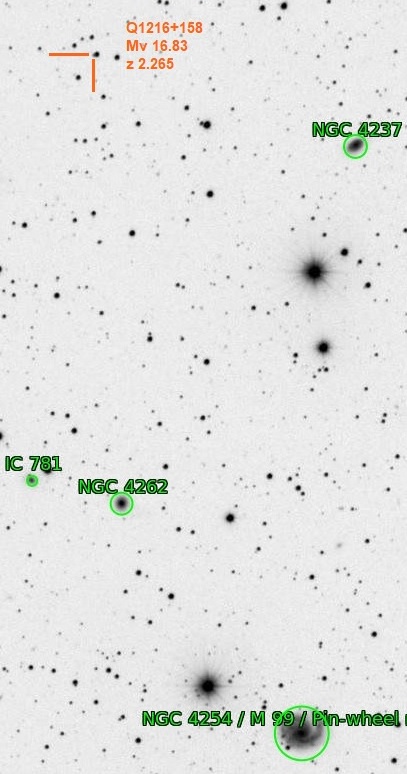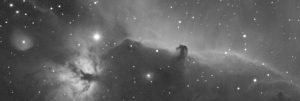4h40 exposure (L:56x300s)
Acquired on the 28th of February 2019 with Samyang 135mm
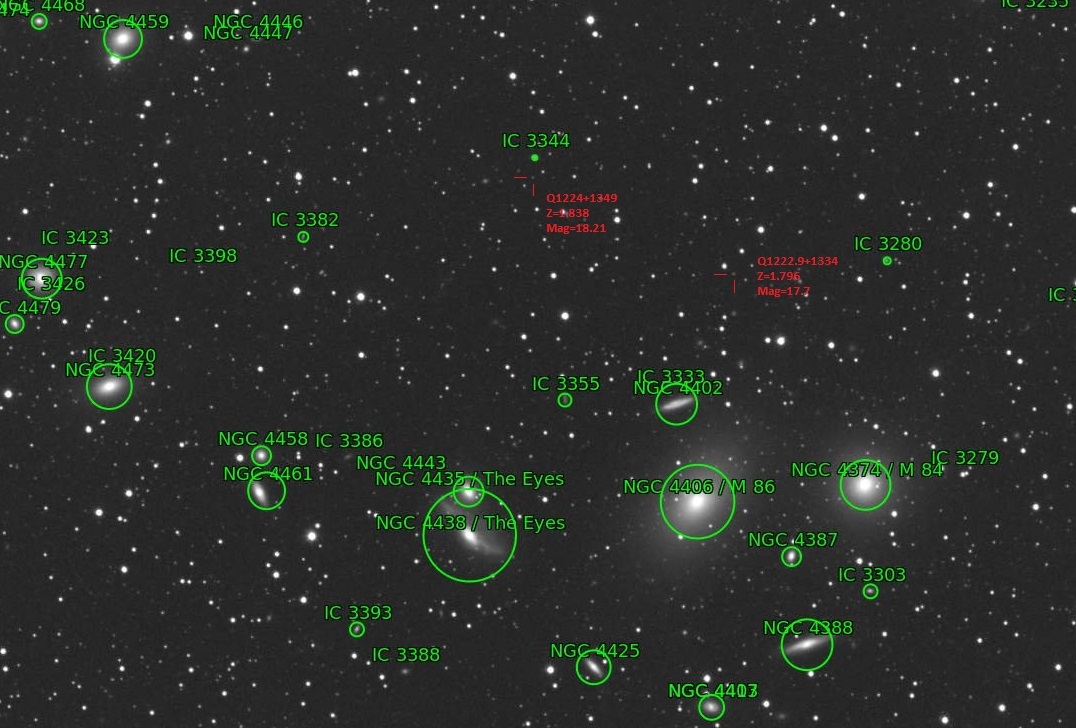
QSO1224+1349 et QSO1222.9+1334 – 2 Quasars located in the north of Markarian chain. Samyang 135mm F/2 at F/2.8, QHY163m gain=100
This article suggests a method to identify Quasars objects on personal photos. This method, very simple, uses Aladin Desktop software from Strasbourg astronomical Data Center.
Quasars identification method
1. Open Aladin software. If not already installed, click here for download
2. Find star field corresponding to your image
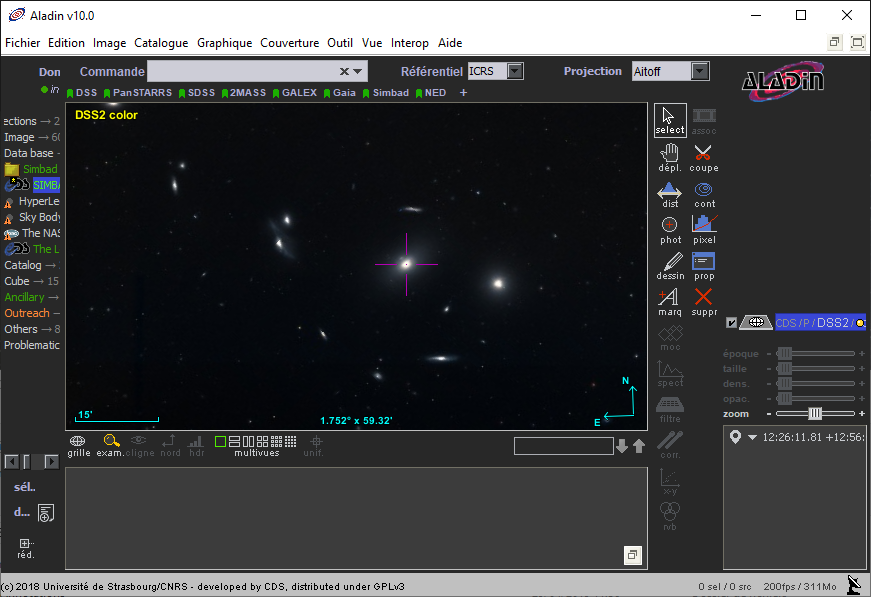
3. Add Simbad layer
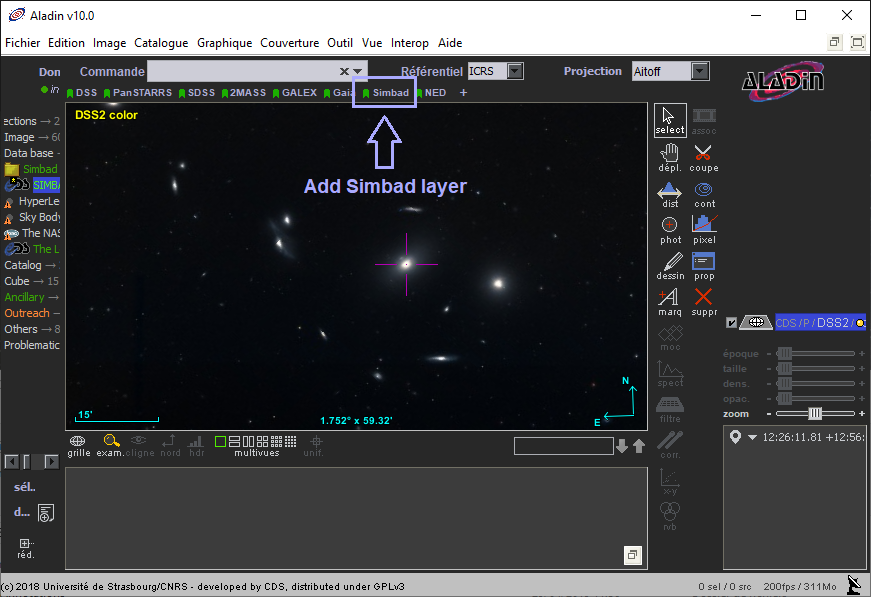
The SIMBAD astronomical database provides basic data, cross-identifications, bibliography and measurements for astronomical objects outside the solar system.
4. Click on “CDS/Simbad” layer and then click on “filtre” button

5. On filter window, give a name to your filter (optional) and copy/paste the following string in filter definition
$[src.class]=”QSO” && $[phot.mag*]<18.5 {draw red square}
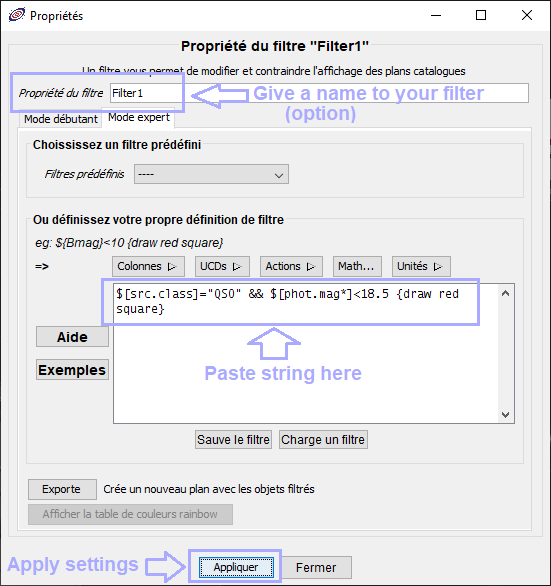
“$[src.class]” define kind of objet to display. QSO=Quasar
“[phot.mag*]<18.5” display object with magnitude below 18.5
“{draw red square}” display a red square at object location
Note: Magnitude choice depends, among others, on material used (telescope, mout, camera, filter…) and climatic conditions (pollution, altitude, seeing…).
You should now observe red squares indicating location of Quasars with magnitude below 18.5.
6. In case all Simbad objects are displayed, right-click on Simbad layer and select “Properties”.
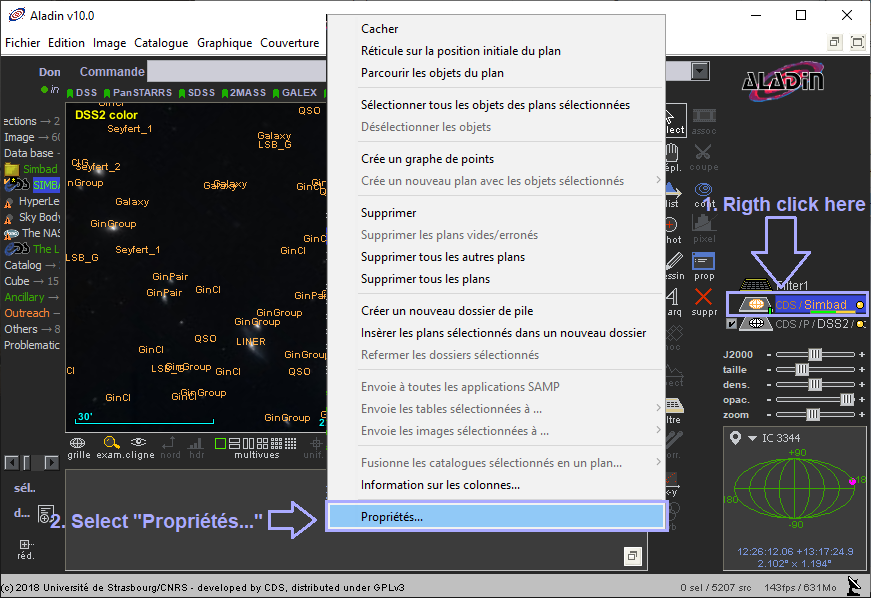
Then Click on “- aucun filtre -” to deactivate the default Simbad filters.
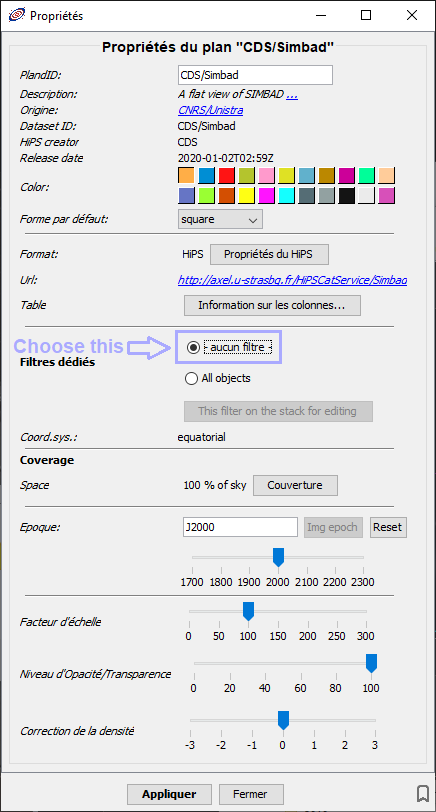
7. Click on a red square to obtain Quasar information (name, redshift, magnitudes…)
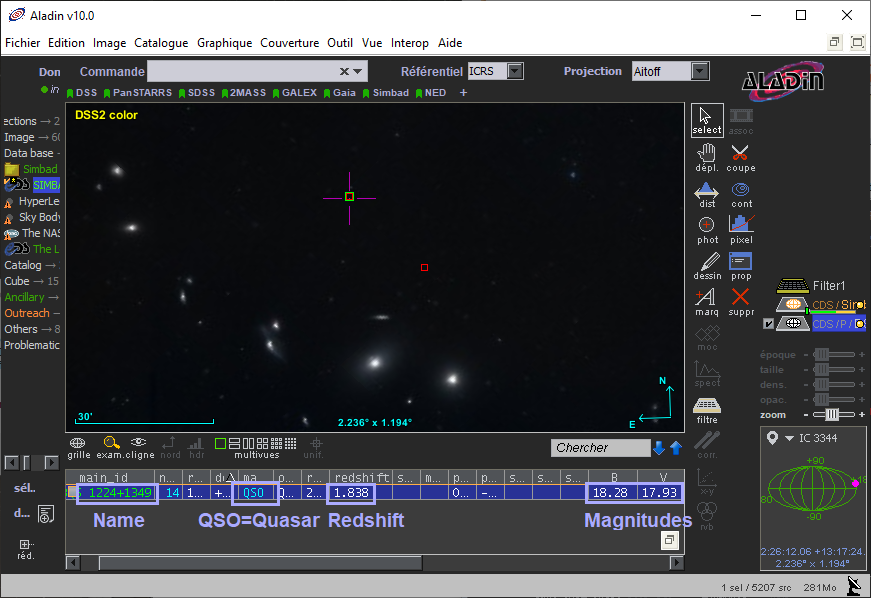
8. Up to you now to determine if this Quasar is visible on your photo… 🙂
About Quasar
“Quasar” means “Quasi-Stellar Object” (QSO) as seen as this when discovered. Despite its name a Quasar is very different from a star.
A Quasar is a primitive galaxy from the firsts Billions years of the universe. This galaxy is made of an Active Galaxy Nucleus (AGN) containing a super massive black hole attracting surrouding matter. This gravitationnal process involves an accretion disk where matter collides and releases an enormous quantity of energy in the form of electromagnetic radiation (mainly in UV and visible, but not only) and as relativiste jets. Energy emitted by Quasars is such gigantic that they can be observed at Billion light years away.
About Aladin
Aladin is a free interactive sky atlas developped by the Strasbourg astronomical Data Center (https://aladin.u-strasbg.fr/aladin.gml) – Strasbourg Observatory – France.
Aladin displays photographies as well as full sky surveys. It allows superimposing entries from astronomical catalogues and databases, such as Simbad, VizieR services and other archives for all known astronomical objects in a given field of view.
This software is a research tool and a huge source of information allowing astronomical objects identification.
https://aladin.u-strasbg.fr/
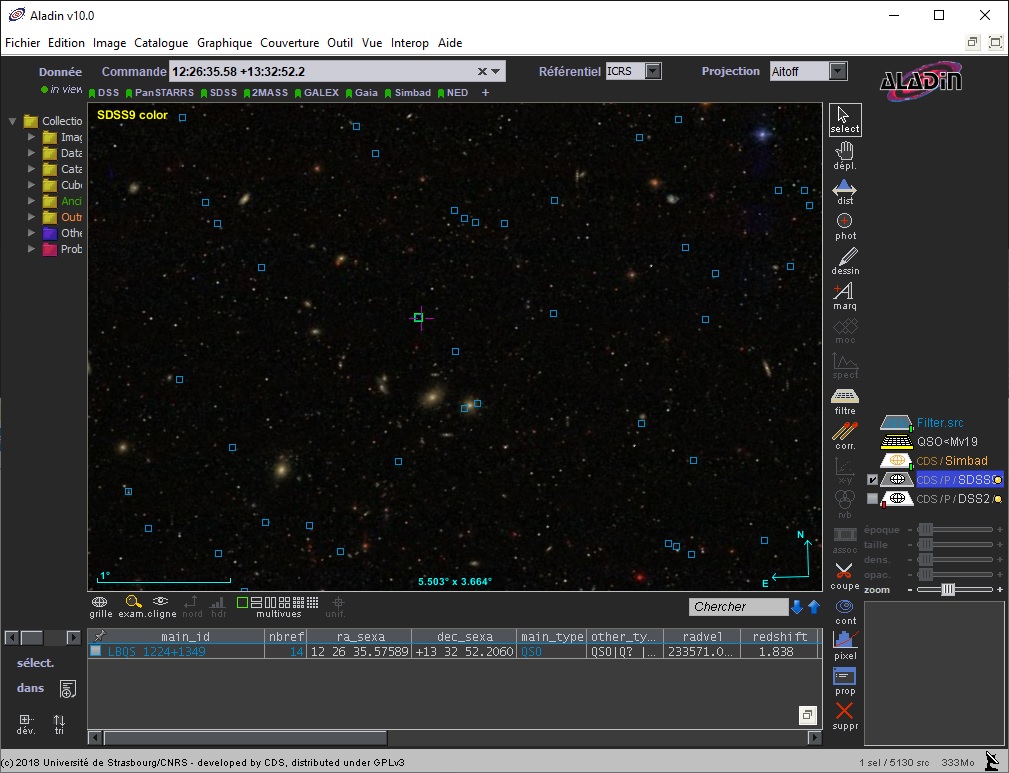
Aladin sky atlas v10.0 developed at CDS, Strasbourg Observatory, France

